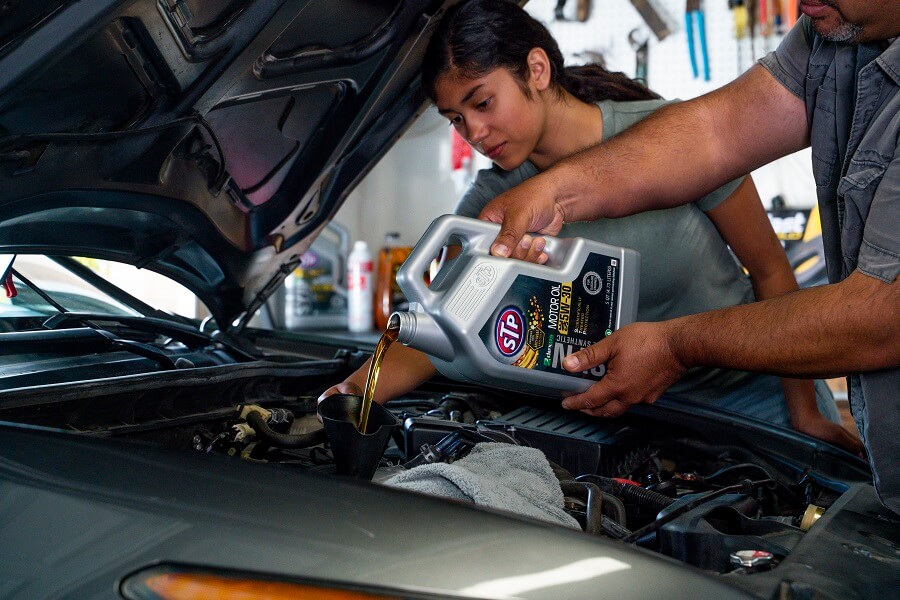How to Change Your Oil
Learning how to change your oil at home is an easy DIY task that will save you a trip to your local dealership or mechanic, as well as some dollars. And trust us, you’ll feel empowered and will get that extra pep in your step, after realizing you know how to operate and take care of your vehicle better.
What You’ll Need
Full disclosure, you really need only a few essentials: the oil, a socket wrench, a drain pan, an oil filter, etc. However, if you’re attempting this at home and don’t want to make a mess of yourself or your driveway, we’ve added on a few more basics that will make the process easier on clean up, as well as which will make you feel more secure.
Must Have:
Engine oil
Oil filter with new o-ring
Drain pan for the used oil
Socket wrench
Funnel
Optional, but Recommended:
Rags
Latex gloves
Jack and jack stand
Tarp
The Step-by-Step Guide
1. First, reference your manual to understand the quantity and type of oil needed. Following the recommendation for oil viscosity is crucial! While you can buy extra in bulk to keep on hand, we’d recommend starting with a smaller jug for your trial run.
2. Lay down a tarp or plastic sheet, if you’d like to avoid any potential oil splashes. Drive your car on top.
3. Warm up your car. You actually want the engine and oil to be warm, so run your car for a minute or two. If has been running already, then let it cool down so it’s not too hot to handle.
4. Elevate your car using the jack stand for better access and visualization, if needed.
5. Undo your oil fill plug. This will let air in, so that the oil will end up draining out faster.
6. Locate the drain plug, and place your drain pan underneath. Make sure it’s a decent size. The oil will come out at an angle, so be prepared to adjust. And note, you’ll want to put on gloves or be prepared with rags at this point.
7. Unscrew the plug with a socket wrench, turning to the left, and drain oil.
8. Change that filter in the meantime. You’ll need to unscrew the old filter, checking that its o-ring comes out with it. Then, you’ll swap it out, but first line the new filter with a bit of oil along its o-ring before securing it on. Hand tighten.
9. When the oil is done draining, put your drain plug back in place.
10. Return to the oil fill plug that you loosened earlier. Add in your new oil to the engine, using a funnel here to prevent any splashing. Return the oil cap. Turn on your car to test that the oil pressure has gone up. Slowly repeat and add more, if needed.
11. Pour the used oil from the drain pan into a large jug. Save it to be recycled later.
Keep Your Trusty Manual On Hand & Give It a Go
Yes, this can be a bit intimidating, and it can be messy. Your first go at it could take up to an hour, but as you get more comfortable, the process will go quicker. So, the next time your oil needs to be changed, it is your opportunity to finally prove your mechanic abilities!

Cash For Junk Cars Olathe
2025 © Cash for Junk Cars Olathe All Rights Reserved. Privacy Policy
